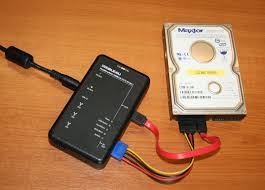Digital forensics is making a difference in the world by helping solve serious cybercrimes. This will drive the global digital forensics market remarkably in the coming few years. According to Transparency Market Research, in 2014, the global digital forensics market was worth more than US$2.0 bn and by 2021, it will be worth US$4.9 bn. The shows that the global digital forensics market will more than double in its value in just a few years.
The key driver of the global digital forensics market is the rising threat of crime and terrorism. 2013 was claimed to be the ‘Year of the Data Breach’. In 2013, the world witnessed some of the worst data breaches in history. Firms such as Facebook, Target Corp., Adobe, JP Morgan Chase & Co., Texas Health Harris Methodist Hospital, and the Dept. of Energy fell prey to cyberattacks. This also continued in 2014 and many well-known firms were deeply impacted by cyberattacks.
The key driver of the global digital forensics market is the rising threat of crime and terrorism. 2013 was claimed to be the ‘Year of the Data Breach’. In 2013, the world witnessed some of the worst data breaches in history. Firms such as Facebook, Target Corp., Adobe, JP Morgan Chase & Co., Texas Health Harris Methodist Hospital, and the Dept. of Energy fell prey to cyberattacks. This also continued in 2014 and many well-known firms were deeply impacted by cyberattacks.
Browse Research Report:http://www.transparencymarketresearch.com/digital-forensics-market.html
Many companies are still struggling to set up effective cyber security against the ever-evolving threat of cyberattacks. Although companies are developing and adopting innovative ways such as risk-based security to amp up their cyber security to secure consumer and employee data, they are still struggling with many key issues that are hampering them from adopting effective cybersecurity systems. This is one side of the story, where companies are struggling to achieve ways to ensure security against breaches.
Rising Effectiveness of Digital Forensics to Fuel Global Market Expansion
However, digital forensics plays a vital role after or during a cybercrime. The effectiveness of digital forensics in dealing with cybercrimes in various sectors such as healthcare, education, information technology, law enforcement, defense and aerospace, and BFSI is making it popular around the world. Official bodies such as the FBI have set up special units that are focused on solving cybercrimes using digital forensics. Here are some examples where digital forensics helped save the day:
- In 2005, after eluding the police for over 30 years, a serial killer (BTK) re-emerged in Kansas and took another victim. Then, he sent the police a floppy disk and a letter on it. Digital forensic investigators, after analyzing a deleted Word file found in the file’s metadata, discovered that the last person to modify it was ‘Dennis’ at Christ Lutheran Church. Combining this data with Dennis Rader’s background and DNA, the police were able to link him to the BTK murders.
- In 2007, a couple bought a three-bedroom apartment from The Corcoran Group, one of the largest real-estate brokerages in New York. After facing massive leaks during rains, they filed a case against the firm. The computer forensic expert was searching for evidence of wrongdoing; however, he found that several emails and other files that should have been present on the hard drive had been deleted. This showed that Corcoran agents canceled appointments with buyers to hide the previously known water leaks.
- In 2009, Krenar Lusha, an Albanian immigrant who lived illegally in the UK, was convicted on the charge of intending to commit terrorist acts. The pertinent evidence for Lusha was digital information that computer forensics found on his computer about manuals on building bombs and detonators.
Browse Press Release:http://www.transparencymarketresearch.com/pressrelease/digital-forensics-market.htm
These cases are just a glimpse of how digital forensics has helped solve crimes or prevented serious crimes from occurring. With rising cybercrime, the importance of digital forensics will grow. This trend is projected to generate several jobs, fuel innovation, and drive investments in the global digital forensics market, which will help the market expand exponentially in the foreseeable future.

No comments:
Post a Comment